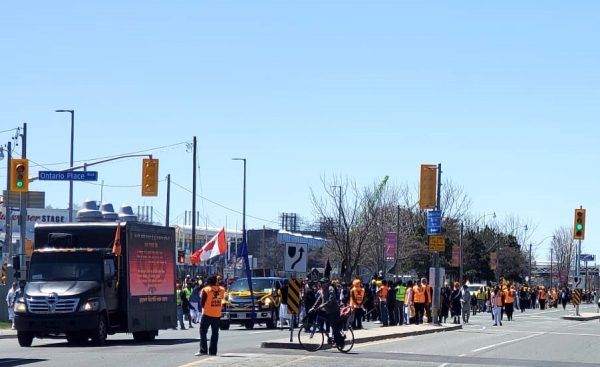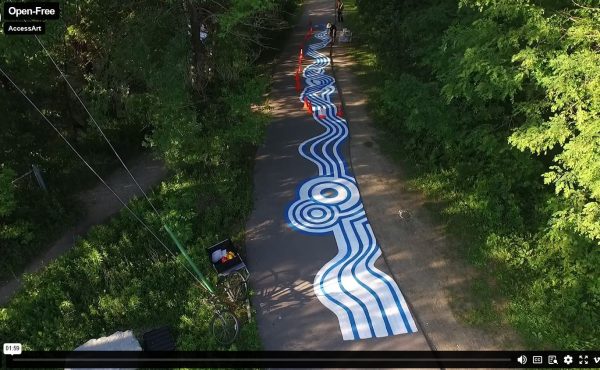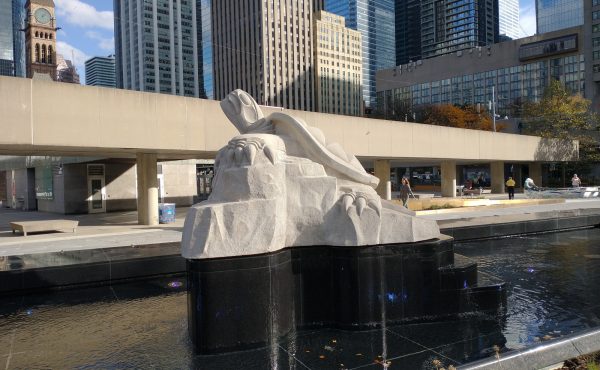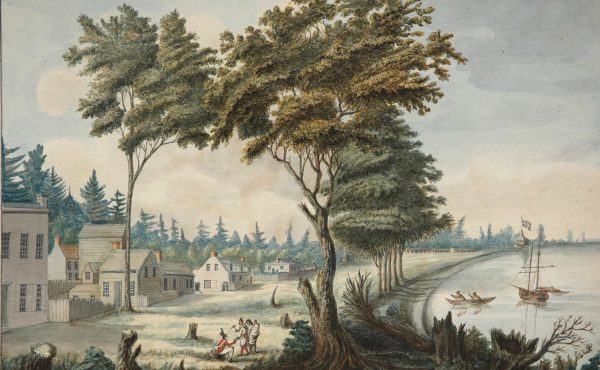A Vision for Pedestrian-Filled Streets
On the last Sunday in April, thousands of people flooded downtown Toronto for the Khalsa Day parade, celebrating the Sikh New Year and the establishment of the Sikh community in 1699. Since beginning in 1986, Toronto’s Khalsa Day parade has grown into one of the city’s largest annual events, closing major streets like Lake Shore Boulevard, York Street, University Avenue, and Queen Street West.
Showers of yellow flags filled the streets, marching bands played, and giant floats adorned with colourful decorations rolled by, all underlining a simple but powerful idea: streets aren’t just for cars — they’re for people.
As event co-ordinator Manjit Parmar emphasized, inclusiveness is a key part of Sikhism, and the parade is a vivid example of how our streets can unite Toronto’s diverse communities. Tajinder Singh, who traveled from Brampton for the event, summed it up: “When you leave your country and when you’re in Canada, this is very important. You unite together.”
And it’s not just cultural parades. This Father’s Day, Bloor Street will be closed from Avenue Road to Yonge Street for the Yorkville Exotic Car Show. Once again, we’ll see how easily major streets can transform for people when we choose to.
Because if we can shut down Lake Shore, University Avenue, and Bloor for celebrations — without grinding the city to a halt — why can’t we build a regular, citywide tradition of open streets that bring people together?
What’s Missing: Permanent, Predictable Open Streets
Toronto has seen glimpses of this idea. We have festivals like Pride, Toronto Caribbean Carnival, TIFF, and Kensington’s Pedestrian Sundays. During the pandemic, ActiveTO expanded public space for walking, biking, and outdoor dining.
And until recently, OpenStreetsTO gave us a beautiful, large-scale model: a few weekends each summer, major roads like Yonge and Bloor closed to cars and opened to families, cyclists, artists, and businesses. It was vibrant, inclusive, and joyful.
But instead of building on that momentum, we let these programs fade away. ActiveTO was scaled back. OpenStreetsTO ended after 2022. And so, we remain stuck in the same cycle: pilots, one-offs, and parades — but no consistent, citywide strategy.
Other cities show it doesn’t have to be this way.
What Other Cities Are Doing Right
In Montréal, seasonal and permanent pedestrian streets have become anchors of neighbourhood vitality. Streets like Rue Sainte-Catherine in the Village or Promenade Wellington in Verdun were once clogged with cars. Today, they’re lined with shops, patios, and people. A 2020 review by Quebec’s Agence Science Presse shows what happened: foot traffic surged, business vacancy rates dropped, and locals took pride in having a “village in the city.” In Québec City, the 3e Avenue corridor saw similar success — all because the city worked hand-in-hand with local BIAs and neighbourhood groups to get it right.
Even Halifax — with its often icy winters — has turned Argyle and Grafton into year-round pedestrian-first corridors, with heated sidewalks and creative snow-clearing protocols. The idea that winter must automatically shut down outdoor city life is a myth we’ve created for ourselves.
The common thread? Leadership. Not endless pilot projects, but real investment in making streets people-first year-round.
These cities worked with businesses, residents, and local groups to plan solutions: managing deliveries, winter maintenance, and access. And the payoff?
- Increased foot traffic
- Lower commercial vacancy rates
- A stronger sense of neighbourhood pride
Meanwhile, cities like Hamilton and Waterloo are already gearing up for their Open Streets events this summer. Toronto, a city of nearly 3 million, risks falling behind.
What’s Stopping Toronto?
Toronto’s own staff reports (PDF) admit the concerns about snow removal, deliveries, and parking are valid, but solvable. We already overcome these obstacles for parades, film shoots, and street festivals all the time.
What’s missing isn’t logistics — it’s political will.
We need leadership that treats pedestrian streets not as special events, but as essential infrastructure. We can no longer afford to rely on stretched volunteers or last-minute scramble planning. As former councillor (now MPP) Kristyn Wong-Tam rightly said, these initiatives should be managed from the mayor’s office, not left to volunteers and BIAs to patch together.
This isn’t about one councillor championing a project for a few blocks downtown. It’s about embedding open streets into how we see and use our city.
The Economic Case for Open Streets – and a FIFA 2026 Opportunity
The old narrative that pedestrian streets kill business has been repeatedly debunked. Across North America, and here at home, pedestrian zones consistently create:
- More frequent visits
- Longer dwell times
- Higher local spending
With thoughtful design that protects deliveries and accessibility, these spaces boost, not harm, local economies. Programs like CaféTO showed this in action, helping thousands of small businesses survive the pandemic by reclaiming curb lanes for patios and foot traffic.
Now, Toronto has a once-in-a-generation opportunity to scale this success. The FIFA World Cup 2026 (FWC26) will bring millions of visitors and $940 million in positive economic output (PDF) to the Greater Toronto Area, according to Deloitte Canada’s estimates. With major events centered at Toronto Stadium and across the city, our mobility networks will be tested like never before.
Single-occupancy vehicle travel will necessarily decrease — not by choice, but by circumstance. Road closures, event security zones, and limited parking will make GO Transit, TTC, BikeShareTO, walking, and rolling the default modes of travel. Open, pedestrian-friendly streets will not just enhance safety and crowd management; they will drive more spending, longer visits, and stronger small business outcomes.
FWC26 can be more than a sporting event. If we plan boldly, it can accelerate Toronto’s transition toward a less car-dependent, more vibrant, and more resilient future — leaving a lasting legacy for residents long after the final whistle blows.
A Clear Proposal: Open Streets Every Weekend, April to November
Toronto needs a clear, predictable program for regular pedestrian zones:
- Every weekend, from April to November
- Rotating locations to share the benefits across neighbourhoods: Danforth, Bloor West, Weston, Little Jamaica, Bayview, Eglinton, Scarborough Village, and more
- City-backed logistics: delivery planning, snow removal strategies, BIA support
- Coordination from the Mayor’s Office, not just volunteer efforts
Public space should prioritize people. Not just during parades. Not just downtown. Not just for one-off celebrations. Everywhere, all season long.
Toronto’s Future Depends on It
If we’re serious about accommodating a projected 3.6 million residents by 2051, we can’t keep clinging to car dominance. More lanes for cars won’t fix congestion. Making streets vibrant, people-centered, and accessible will.
As Janette Sadik-Khan writes in Streetfight: Handbook for an Urban Revolution, the transformation of public spaces is a “fundamental rethinking of how we use streets,” where we prioritize people, not cars. The Times Square transformation she spearheaded is a testament to what’s possible. A once congested, car-dominated space is now an iconic pedestrian plaza that attracts millions of people annually. The result? Increased foot traffic, lower accident rates, and a vibrant economic hub.
Toronto has the potential to follow that example. By making our streets less about cars and more about people, we can create spaces that draw people in, encourage local commerce, and make our city safer and more inclusive. Cities like Barcelona, Portland, and Montreal have already shown us the way. It’s time for Toronto to catch up.
It’s time to make open streets a permanent part of our city’s life.
Lanrick Bennett Jr. is Urbanist-in-Residence at the University of Toronto School of Cities





One comment
We still need. Cars